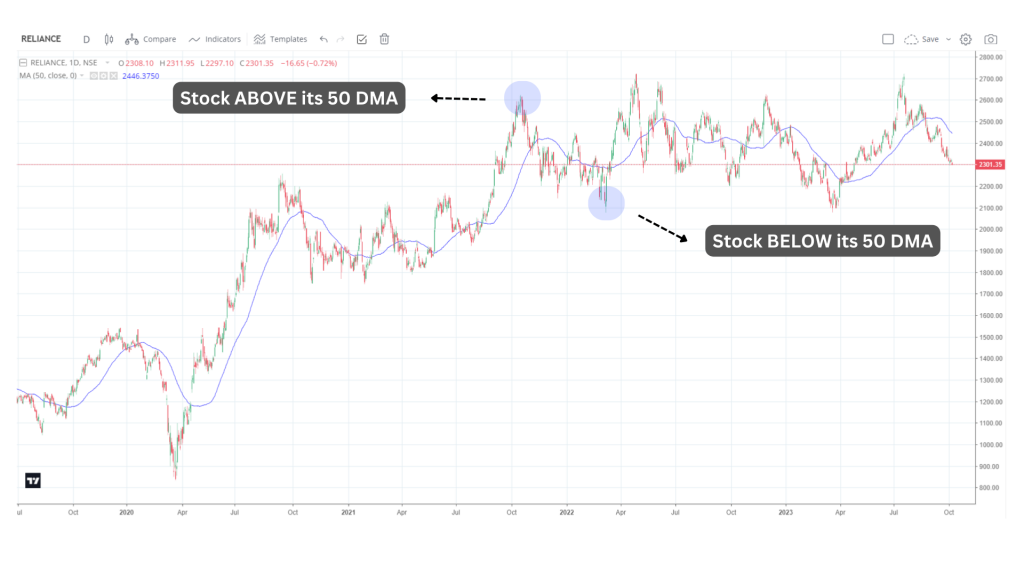The stock market is a complex and ever-changing entity that is influenced by numerous factors. One way to gauge the overall sentiment and direction of the market is by analyzing technical indicators, such as the moving average. In this article, we will specifically focus on the 50-day moving average and its impact on the market.
Understanding the 50-Day Moving Average
Before delving into the significance of the 50-day moving average, let’s briefly explain what it represents. The moving average is a calculated average of a stock’s closing prices over a specific period. In this case, we are considering a 50-day moving average, which looks at the average closing prices of a stock over the past 50 trading days.
Here’s an example of a 50 day moving average applied on RELIANCE

If the price of the stock is greater than its last 50 day average price, then the stock is trading above its 50 DMA & vice versa
Assessing Oversold and Overbought Conditions
The 50-day moving average can provide valuable insights into the market’s health. By analysing the percentage of stocks above or below their 50-day moving average, we can determine whether the market is oversold or overbought.
In the below chart of the S&P 500 constituents, we can observe that only about 8.6% of the 500 stocks are currently above their 50-day moving average. This indicates an oversold market, with only 43 out of 500 stocks showing strength. In other words, the majority of stocks are trading below their average price over the past 50 days.

Chart credits : Stockcharts.com & Charlie Bilello
Significance of an Oversold Markets
An oversold market suggests that selling pressure has outweighed buying pressure, leading to a potential market decline. It signifies a bearish sentiment among investors, as stocks are trading at lower prices than usual. When the market is oversold, it may indicate a buying opportunity for investors looking to enter the market at lower price levels.
However, it’s important to note that an oversold market does not guarantee an immediate reversal. Market conditions can remain oversold for extended periods, like what we can observe during the time of 2008 Global Financial Crisis.
Relationship with the US Market
The Indian market tends to follow the direction of the US market, either rising or falling based on its performance. While the Indian market has shown resilience compared to the US market, it is still susceptible to its movements.
Given the oversold condition of the US market, what we think is that the likelihood of a significant decline may be low. This inference is based on the statistical probability of the US market going down steeply from its current point. Similarly, if the US market is likely to avoid further deep declines, the same reasoning may apply to the Indian market.
Applying the Analysis to the Indian Market
We will look to conduct a similar analysis for Indian indices like the Nifty 50 or CNX 500 index. This analysis would provide insights into the current state of the Indian market and help understand how it aligns with the oversold conditions observed in the US market. Please stay tuned for the same !

If you have any questions, please write to support@weekendinvesting.com









